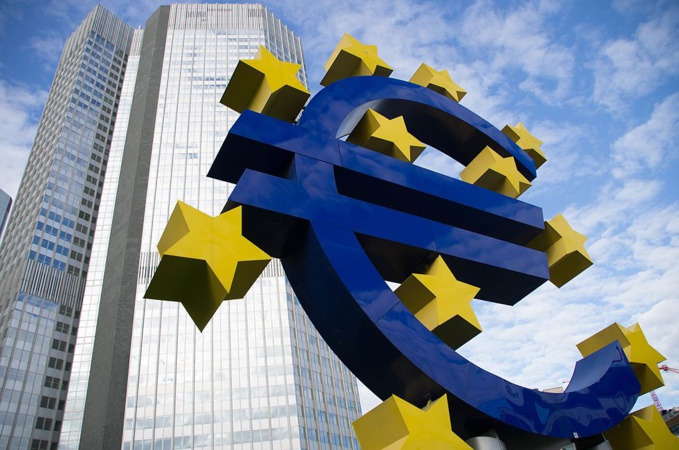The EU states want to reduce the volume of problem loans in European banks as soon as possible. At the moment, the sum numbers nearly 1 trillion euro. German Finance Minister Wolfgang Schaeuble and his colleagues have outlined a corresponding action plan in Brussels. The paper is supposed to strengthen supervision over banking activities, explained the German Ministry of Finance’s Head.
"It is necessary to unify the rules to establish a so-called "bad" bank, but it must be done very carefully. This should be a unified national insolvency rules for small banks that must differ from the rules for large EU banks. The recent problems with the banks of Spain and Italy showed, that there are significant differences. You cannot equally approach salvation of large and small banks, there must be a binding agreement".
Wolfgang Schaeuble praised the Italian authorities’ actions to save the country's banks. Recall that in early June, the Italian authorities announced their readiness to recapitalize the Banca Monte dei Paschi di Siena SpA after the European Union and Italian officials agreed on a draft plan that would include further restructuring of the world's oldest bank.
European Commissioner for Competition Margrethe Vestager and Italian Minister of Economy and Finance Pietro Carlo Padoan reached a "principled agreement" on a restructuring plan for Monte Paschi. According to the statement, the paper will open a way to preventive recapitalization. The deal, which followed "intense and constructive interaction" between Italy, the EU and the ECB, will require formal approval.
Monte Paschi was forced to seek help from the Italian government after the bank failed to attract additional capital from investors in December. The European Central Bank said that the Italian bank should close the capital deficit of € 8.8 billion. According to the Bank of Italy’s calculations, the government will provide about € 6.6 billion, the remaining lack of capital will be closed at the expense of creditors.
New rules for banks, which were discussed today in Brussels, will allow creating a so-called "bad" bank in the EU.
Earlier this year, Chairman of the European Banking Authority (EBA) Andrea Enria said that the European Union should have a "bad" bank, which will collect "bad" loans as their total volume has already amounted to 1 trillion euro. Now they are hampering economic growth in the region, says Enria. At the moment, sale of overdue loans is hindered due to the lack of a proper market. This, in turn, has already resulted in too low prices vain attempts to get rid of this burden.
The asset management company, acting as a "bad" bank, will try to sell "bad" loans at their estimated "real economic price", rather than by market value. If the European "bad" bank cannot get rid of a loan within three years, then it will have to accept the market price.
There are about 1.06 trillion euro of non-performing loans in the banking system of the European Union, which is 5.4% of total loans. This is more than three times higher than in Japan or the United States. Italian banks alone account for almost 276 billion euro of "bad" debts.
source: bloomberg.com, reuters.com
"It is necessary to unify the rules to establish a so-called "bad" bank, but it must be done very carefully. This should be a unified national insolvency rules for small banks that must differ from the rules for large EU banks. The recent problems with the banks of Spain and Italy showed, that there are significant differences. You cannot equally approach salvation of large and small banks, there must be a binding agreement".
Wolfgang Schaeuble praised the Italian authorities’ actions to save the country's banks. Recall that in early June, the Italian authorities announced their readiness to recapitalize the Banca Monte dei Paschi di Siena SpA after the European Union and Italian officials agreed on a draft plan that would include further restructuring of the world's oldest bank.
European Commissioner for Competition Margrethe Vestager and Italian Minister of Economy and Finance Pietro Carlo Padoan reached a "principled agreement" on a restructuring plan for Monte Paschi. According to the statement, the paper will open a way to preventive recapitalization. The deal, which followed "intense and constructive interaction" between Italy, the EU and the ECB, will require formal approval.
Monte Paschi was forced to seek help from the Italian government after the bank failed to attract additional capital from investors in December. The European Central Bank said that the Italian bank should close the capital deficit of € 8.8 billion. According to the Bank of Italy’s calculations, the government will provide about € 6.6 billion, the remaining lack of capital will be closed at the expense of creditors.
New rules for banks, which were discussed today in Brussels, will allow creating a so-called "bad" bank in the EU.
Earlier this year, Chairman of the European Banking Authority (EBA) Andrea Enria said that the European Union should have a "bad" bank, which will collect "bad" loans as their total volume has already amounted to 1 trillion euro. Now they are hampering economic growth in the region, says Enria. At the moment, sale of overdue loans is hindered due to the lack of a proper market. This, in turn, has already resulted in too low prices vain attempts to get rid of this burden.
The asset management company, acting as a "bad" bank, will try to sell "bad" loans at their estimated "real economic price", rather than by market value. If the European "bad" bank cannot get rid of a loan within three years, then it will have to accept the market price.
There are about 1.06 trillion euro of non-performing loans in the banking system of the European Union, which is 5.4% of total loans. This is more than three times higher than in Japan or the United States. Italian banks alone account for almost 276 billion euro of "bad" debts.
source: bloomberg.com, reuters.com



















